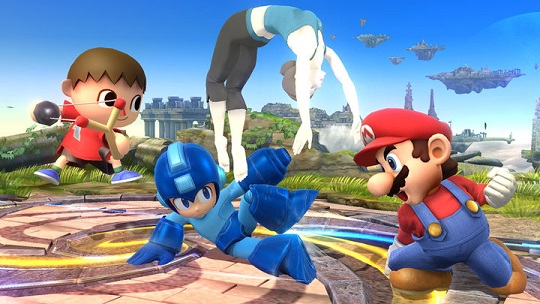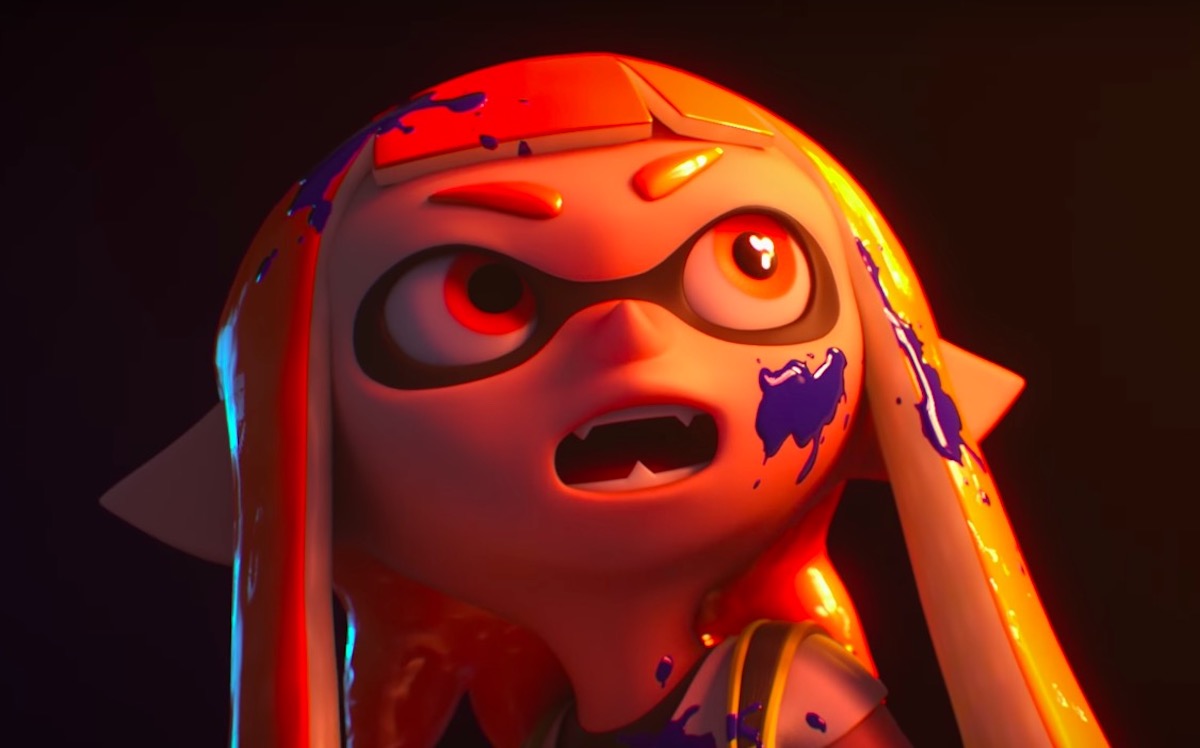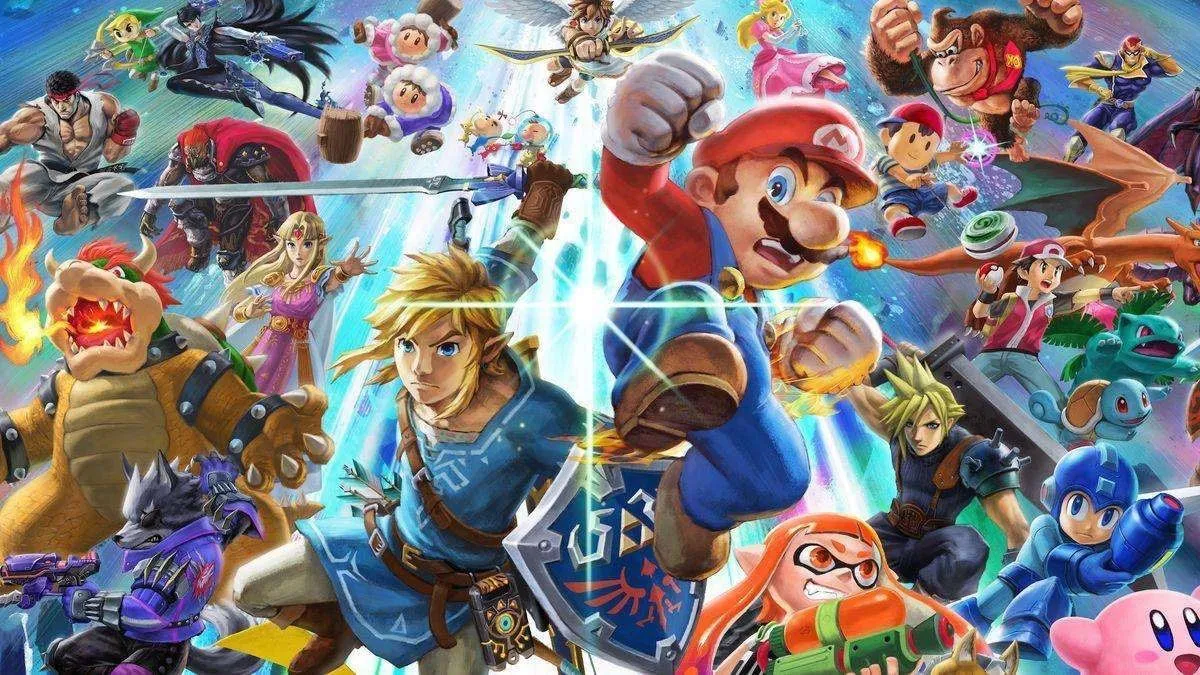The latest installment in Nintendo’s Smash Bros. crossover fighting franchise, Super Smash Bros. Ultimate, will reveal its final downloadable fighter tomorrow, bringing its new additions to a close, and with that comes a sense of the game finally nearing completion despite launching almost 3 years ago. With the development team going to such great lengths to make this entry live up to its name as the perfect version of the series—packed with an absolutely mind boggling amount of characters, stages, music tracks, and more—that feels like a good time to look back and see how far we’ve come.
However, while Ultimate is the undisputed winner of the title of biggest character lineup in a game series where new roster additions are one of the biggest focal points of the fanbase, arguments about which game is best, regardless of the number of playable fighters, have become just as much of a pastime. That probably dates back to the release of the third game in the series, the Wii’s Super Smash Bros. Brawl, which wasn’t nearly the clear step forward that the GameCube’s Smash Bros. Melee was from its predecessor.
But I’m getting ahead of myself. Let’s take a look at the series from—in my opinion—worst to best:
6. Super Smash Bros.

I should kick this off by saying that “worst” is relative with Super Smash Bros.—a series so beloved that it spawned its own genre—and even though the Nintendo 64 version of the game (the first in the series) is ranked lowest, it’s still a great game that I love and have played endlessly.
However, despite the fact that it’s still played in fierce competition today, it just can’t compete with the series’ later entries on any front. At 12 characters in total, with 8 to start and 4 unlockable, it has the smallest roster of fighters by far (along with the smallest number of pretty much everything else, from items to stages), the least impressive graphics, and the most limited gameplay, lacking many staples of later games like air dodging, spot dodging, an entire extra special move per character, and the ability to influence the direction your character is launched in when hit, which introduced the series’ unique level of interactivity during combos.
Again, that’s all in comparison. On its own, the game—developed largely by series creator by Masahiro Sakurai and former Nintendo president Satoru Iwata, before it was even officially approved by Nintendo—deserved its status as a breakout hit and expertly leveraged some of the Nintendo 64’s best assets, like built-in 4-player support and the analog joystick. It was a solid blueprint that was improved upon in every way by the bigger budget, next-gen (at the time) sequel that resulted from its success.
5. Super Smash Bros. Brawl

Before we talk about the series-defining GameCube entry Super Smash Bros. Melee, though, we have to take a detour to that game’s divisive direct sequel, the Wii’s Super Smash Bros. Brawl. Yes, despite its massive popularity and position as the second best-selling game in the series, I have to put Brawl down here near the bottom of the ranking.
With its high sales and the breakout popularity of the console it was released on, Brawl was the Smash game of an entire generation, but it divided the fanbase between those who felt that its gameplay was a downgrade from Melee and those who viewed that as solely the opinion of elitist Melee tournament players. There was such outcry that the game received several extensive fan mods that are still played today, geared towards improving how it played.
Personally, I don’t think just the gameplay should be the deciding factor, especially considering that your mileage may vary on that depending on how much you’re into the competitive side of the game. While I’m not a fan of some changes Brawl made in the gameplay department, Melee absolutely had some rough edges and clunkiness that Brawl smoothed out, and it was, as usual, a clear upgrade in character variety and other aspects you’d expect to get bigger and better with every iteration.
It also boasted the series’ most expansive single-player mode, “The Subspace Emissary,” with a whole convoluted storyline and side-scrolling stages befitting its characters’ platform gaming feel. However, that single-player mode had its own pitfalls, especially in not making nearly enough use of all the source material at its disposal from the fighters’ various games. Not only that, but while it was great to have a full single-player experience, that’s not really what Smash is all about, and you could feel that while playing it.
Brawl also added online play in a series first, but unless you were playing with friends, the options were extremely limited. However, aside from a small increase in input delay, it also introduced possibly one of the worst gameplay mechanics of all time: random tripping.
Many of Brawl’s changes from Melee worked to make it even more accessible to less experienced players, which was a great idea with the Wii’s broad popularity, but tripping went a bit far. If you’re not familiar—or you successfully blocked out the memory—characters would randomly “trip” and fall down mid-battle, through no fault of the player. It was just there to add some extra randomness to the game to level the playing field, and it’s no coincidence that it didn’t return in any subsequent titles.
Without tripping, I might have to place Brawl above Melee, but it’s incredibly hard to defend as a gameplay mechanic, giving Melee an clear edge in a heated debate.
4. Super Smash Bros. Melee

That brings us to Smash Bros. Melee, which may have just as many players crying foul to see it placed in the bottom half of any ranking. Melee has a history of an incredibly vibrant and resilient tournament scene that has continued on long after Brawl’s release, with many Smash Bros. fans agreeing that it’s the most competitively-geared, mechanically deep entry in the series, even if that’s not what they’re personally interested in.
If I were rating on that basis alone, Melee may indeed get the top spot, but taking in the game as a whole, considering the experience for players of all skill levels, this is where I think Melee sits. As previously discussed, it introduced many of the series’ defining gameplay mechanics and, in some ways, controls better than any of the later games in the series, but outside of the best of the best players, its sequels have made some definite improvements.
One thing that encapsulates this is Melee’s (almost) complete lack of “buffer,” meaning that, in Melee, if you press a button while your character is still busy with a different action, that button press won’t do anything at all. In later games, a generous buffer (10 frames, or 1/6 of a second, in Brawl) helps players with a less precise knowledge of the timing of each character’s moves by allowing them to press buttons before their current action fully finishes, with the next action then executing as soon as it’s allowed.
Effectively, it greatly reduces how precise players have to be with timing their moves, so newer players aren’t left wondering why pressing a button didn’t do anything just because they pressed it slightly too early. For most players, it takes place entirely behind the scenes but goes a long way towards making the game feel more immediately accessible by lowering the precision needed just to perform the game’s most basic techniques.
Personally, I prefer Melee’s lack of buffer and the extra layer of proficiency it requires (or at least I think later games’ buffers should be considerably less forgiving), but it’s hard to argue that later games in the series just feel smoother to play, and that at least some buffer is preferable for most players. I’m not hanging its place on the list entire on that one gameplay mechanic, but it’s a big part of what may make Melee feel dated, clunky, and unfriendly compared to newer games.
3. Super Smash Bros. for Wii U

This part of the list is a bit odd, because the Wii U and 3DS versions of the game are identical in character selection and gameplay (except for the Wii U version’s higher input delay). After Brawl, these two games were a return to form, with less emphasis placed on single-player modes and gameplay improvements and changes made in a clear effort to satisfy fans who thought Brawl was overall less competitively-geared than Melee.
They were both improvements on Brawl in pretty much every way, from improved online modes to gameplay mechanics, decisively supplanting their direct predecessor in a majority of players’ minds in a way Brawl never quite did. Even when it comes to single-player modes, they may not have had the vast story mode of Brawl, but the 3DS version’s “Smash Run” mode and its inclusion of enemies from Smash fighters’ various game series was an excellent demonstration of exactly how Brawl’s single-player mode left so much untapped potential.
Without some of Brawl’s more glaring shortcomings, it’s hard not to rank these entries above Melee, as well, with their incredible amount of content and satisfying gameplay. However, it’s also hard (and maybe even unnecessary) to rank them against each other, considering they’re almost identical in the multiplayer modes that matter most to the series.
Many may even be surprised to see the Wii U version ranked lower when the 3DS faced complaints that multiplayer games were marred by lag due to the fact that there was no way to play with multiple players on a single console. While that’s certainly true for the most serious players, the 3DS version also has lower native input delay, which made its online play—despite the lack of the option of a wired internet connection—feel more reliably smooth to me than Ultimate’s and comparable to the Wii U’s.
2. Super Smash Bros. for 3DS

Again, these two games are essentially identical, though I do think the 3DS’s exclusive single-player mode is better than the Wii U’s, leaving me confused about why it wasn’t included in both. The 3DS just barely edges out the Wii U version for me for reasons explained above.
1. Super Smash Bros. Ultimate

It may seem obvious, but Ultimate’s position in the #1 spot is far from the sure bet it may seem. Yes, it has a mind-boggling amount of content that makes it a veritable playable museum of video games—and every playable fighter from every past Smash game—but it has its own drawbacks, like some weird control issues that are far too complicated to explain here and the highest offline input delay in the series., which only makes its mediocre online play feel much worse.
The input delay alone made it a difficult decision to put the game at the top of the list and leaves me feeling like we still don’t have the “ultimate” Smash game when the controls feel sluggish compared to a 20-year-old predecessor. I just don’t think any of the past entries were as perfect as their biggest advocates make them out to be, although they may individually excel in specific areas that appeal to different people. Frankly, it may seem like the series may as well be ranked in chronological order, but making choices on these rankings felt so close that I think there could be arguments made to put any of them in any order, including first place.
Since I forced myself to choose, I think Ultimate’s balance of pros and cons is the most favorable to the widest range of players, but you’re certainly welcome to make those very arguments in the comments.
(images: Nintendo)
Want more stories like this? Become a subscriber and support the site!
—The Mary Sue has a strict comment policy that forbids, but is not limited to, personal insults toward anyone, hate speech, and trolling.—









Published: Oct 4, 2021 04:54 pm